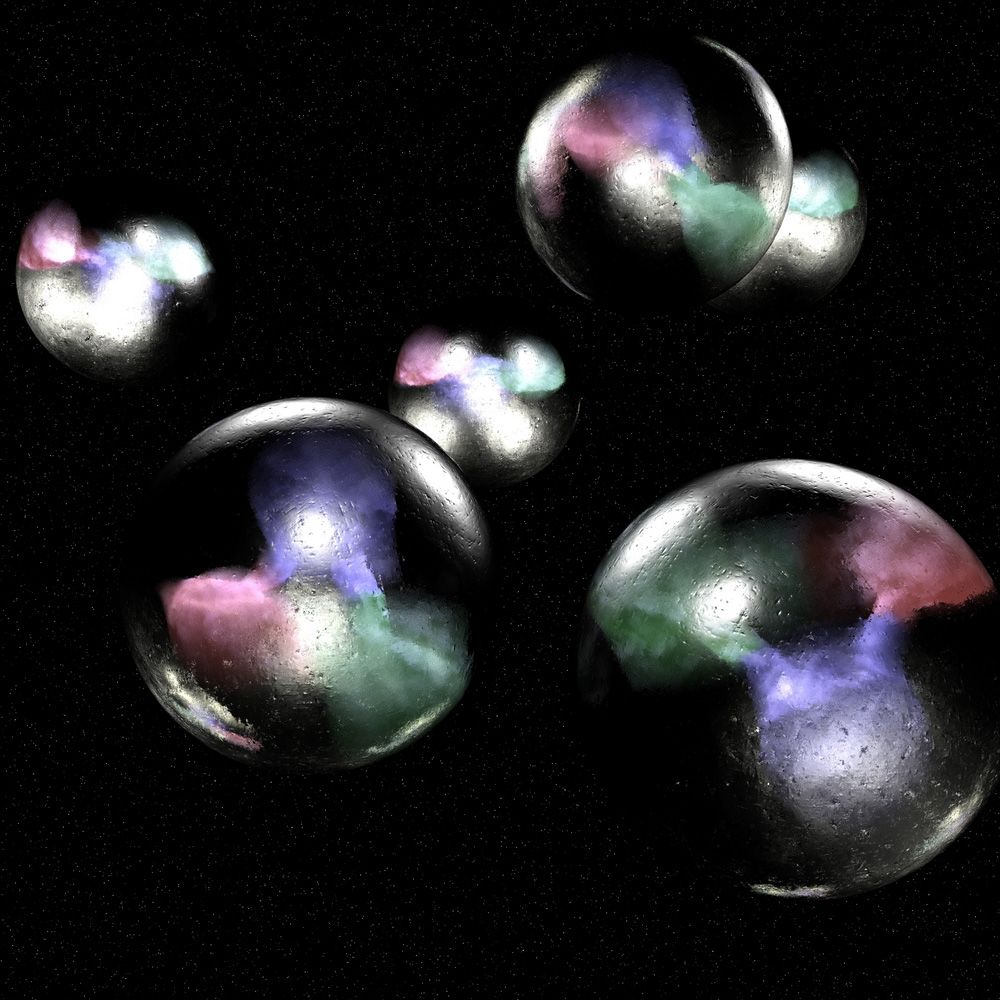Atom Smashers Find Something Not So Charm-ing

The new generation of atom smashers such as the Large Hadron Collider is offering hints that new physics (and exotic new particles) await discovery. And scientists are just reaching the point where they can explore those alternatives.
At a news conference Sunday (April 14) at the American Physical Society meeting in Denver, three panelists offered their takes on the quest for new particle species, including a structure never seen before, and for confirmation that a model called supersymmetry might be true.
The new structure, currently dubbed Y(4140), was discovered in experimental data at Fermilab and the Large Hadron Collider (LHC). "We don't know what it is," said Kai Yi, physicist at the University of Iowa and one of the panelists. It could be some sort of exotic new combination of quarks, though not the so-called charmonium that involves charm quarks, or something else entirely. [Beyond Higgs: 5 Elusive Particles That Await Discovery]
Yi said that current accepted models of particles called quarks make predictions about what one should find in particle accelerator collisions. Whereas physicists can't observe these near light-speed collisions directly, they can "see" through high-tech detectors the cascade of particles that result; that's what tells observers what kinds of particles were present before and during the collision. In this case, the scientists saw something that didn't fit the model predictions. Whether it's a particle or something else is still an open question, Yi said.
Beyond the Standard Model
Many current theories in physics, under the dominant framework Standard Model, have been well tested. Even so, physicists still have a lot of unanswered questions, notably about phenomena such as dark matter, as well as how to connect the fundamental forces of nature, in what are known as Grand Unified Theories, said Sung-Won Lee, assistant professor of physics at Texas Tech University.
"We have three generations of elementary particles," Lee said. "We're looking for signs of new physics … for disagreements with the Standard Model predictions."
Sign up for the Live Science daily newsletter now
Get the world’s most fascinating discoveries delivered straight to your inbox.
Yi said the new structure might be evidence that quarks join together in unexpected ways. Analyzing data from the LHC and its predecessor, the Tevatron at Fermilab, Yi said Y(4140) might be a set of quarks that have joined together in a way that they usually don't. [Infographic: The Standard Model Explained]
Quarks are the basic building blocks of matter. They come in six "flavors" — up, down, strange, charm, bottom and top. They also have "color charge," which has nothing to do with color but is a way to describe a mathematical quality of quarks.
A proton is made of three quarks, two up and one down, whereas a neutron is made of two down quarks and one up quark. Protons and neutrons are baryons. Quarks can also link up with antiquarks and make another class of particle called mesons, which show up in particle accelerators.
To make a particle out of quarks, it's necessary to have the "color charge" add up to being "colorless" — so a proton has to have quarks that are red, green and blue. A meson, made of two quarks, must have a quark and an antiquark — for example, a pion (produced in radioactive decays) is made of an up quark and an anti-down quark.
Yi said one such "standard" meson is called charmonium, made of a charm quark and its own antiquark. The structure the LHC and Fermilab experiments found didn't correspond to that, though. There is a lot of confidence that this discovery isn't just an artifact of the data or a fluctuation. "The chance that this is just a fluctuation is one in 10 to the minus seventh," he said, or 1 in 10 million.
There are many models called "exotic quark models" that assume, for example, that four quarks are joined. But Yi said it is far from clear which model, if any, applies here.
Dark matter and supersymmetry
The Standard Model has been the mainstay of physics for decades, and it has been quite successful — it predicted the existence of the Higgs boson, for example, evidence for which was finally found last year by teams of physicists working with the Large Hadron Collider (LHC). (It's still not certain that the discovered Higgs is the same kind that one might expect from the Standard Model, though.)
There are still some problems, though. For example, astrophysicists know that a large chunk of the universe is made up of something called dark matter, an invisible substance that only interacts with other matter via gravity. The Standard Model has trouble accounting for it, since making dark matter out of particles that we know about wouldn't get the same thing. [8 Baffling Astronomy Mysteries]
Another unanswered mystery is called the hierarchy problem. Gravity is 10^32 times weaker than the weak nuclear force, which governs phenomena such as radioactivity. It still isn't clear why, and supersymmetry theories might be an answer to that problem.
Supersymmetry (or SUSY) is a theory that says the particles that make up matter, called fermions, and those that carry forces, called bosons, all have "superpartners." The superpartners would all have the same quantum properties except one, which describes their spins. Fermions — electrons, for instance — have half-integer spins whereas bosons have so-called integer spins.
But so far nobody has found the supersymmetric partners to known elementary particles — at least not yet. Lee said the LHC is just now approaching energies where some of those particles might be found.
In that vein, Santiago Folgueras of the University of Oviedo in Spain said the recent work has given scientists a better idea of where to look for SUSY particles, but it is hard to do because there aren't many "events," or particle decays, that yield data. Most of the progress has been in setting lower limits on the energies at which supersymmetric partners are likely to be observed.
That doesn't mean there aren't skeptics of theories such as supersymmetry. Mikhail Shifman, a professor at the University of Minnesota, wrote an essay on ArXiv, a website where physicists post their research, in October 2012, saying there's a good chance supersymmetry theories might be a dead end. He noted that the discovery of the Higgs boson was a solid confirmation of the Standard Model (at least so far), but none of the supersymmetric partners of elementary particles has been found yet.
Matt Strassler, a former professor of physics at Rutgers, said Shifman was a bit premature. The LHC work has ruled out many kinds of SUSY theory, though no broad class of theories has been completely excluded yet.
Lee said a lot more work is still required to narrow down the possibilities. "It's like you lost your wedding ring on a beach and have to find it. It's a big area to look in."
That's why it's important for scientists from many institutions to be doing this kind of work, he added. "If you have your friends help you look you have a much better chance of finding it."
Follow us @livescience, Facebook & Google+. Original article on LiveScience.com.












